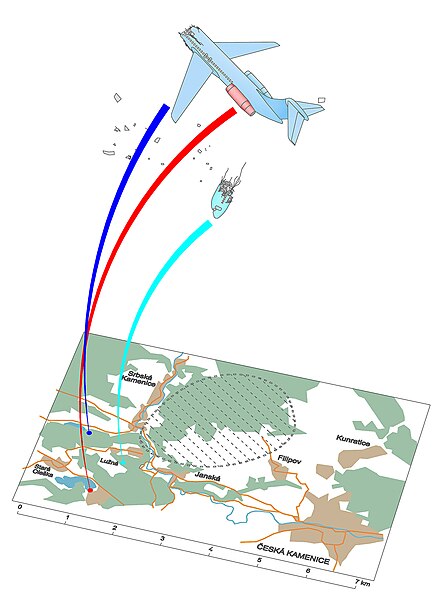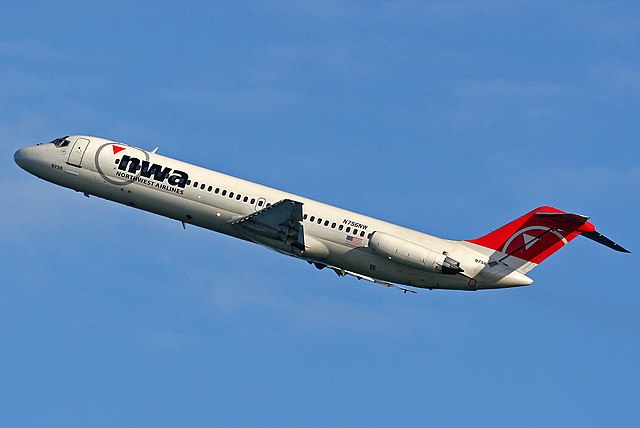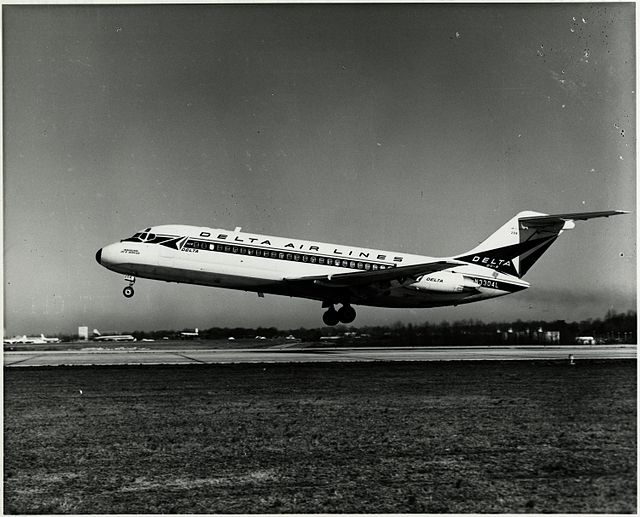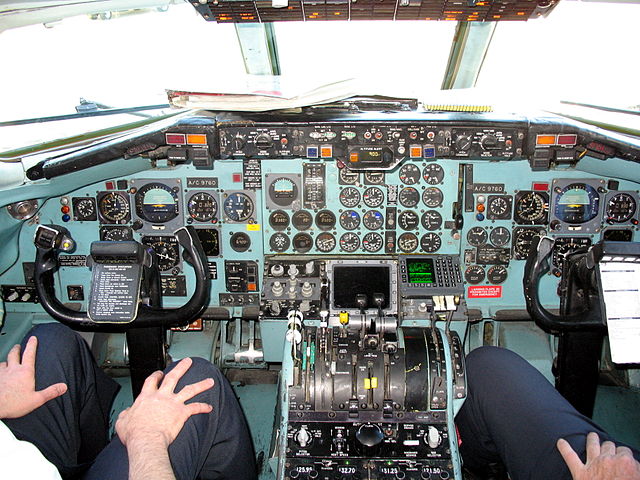JAT Flight 367 was a McDonnell Douglas DC-9-32 aircraft which exploded shortly after overflying NDB Hermsdorf, East Germany, while en route from Stockholm, Sweden, to Belgrade, SFR Yugoslavia, on 26 January 1972. The aircraft, piloted by Captain Ludvik Razdrih and First Officer Ratko Mihić, broke into three pieces and spun out of control, crashing near the village of Srbská Kamenice in Czechoslovakia. Of the 28 on board, 27 were killed upon ground impact and one Serbian crew member, Vesna Vulović (1950–2016), survived. She holds the Guinness world record for surviving the highest fall without a parachute at 10,160 m (33,330 ft).
YU-AHT, the aircraft involved in the accident, 210 days before the bombing.
Debris distribution of Flight 367
Monument in Srbská Kamenice memoralizing the crash
The McDonnell Douglas DC-9 is an American five-abreast, single-aisle aircraft designed by the Douglas Aircraft Company. It was initially produced as the Douglas DC-9 prior to August 1967, after which point the company had merged with McDonnell Aircraft to become McDonnell Douglas.
Following the introduction of its first jetliner, the high-capacity DC-8, in 1959, Douglas was interested in producing an aircraft suited to smaller routes. As early as 1958, design studies were conducted; approval for the DC-9, a smaller all-new jetliner, came on April 8, 1963. The DC-9-10 first flew on February 25, 1965, and gained its type certificate on November 23, to enter service with Delta Air Lines on December 8.
McDonnell Douglas DC-9
The DC-9 entered service with Delta Air Lines on December 8, 1965.
A DC-9's two-person cockpit with analog instrument panel
The cabin of a former Northwest Airlines DC-9, showing a typical four-abreast seating in First Class and Five-abreast seating in economy class behind.







